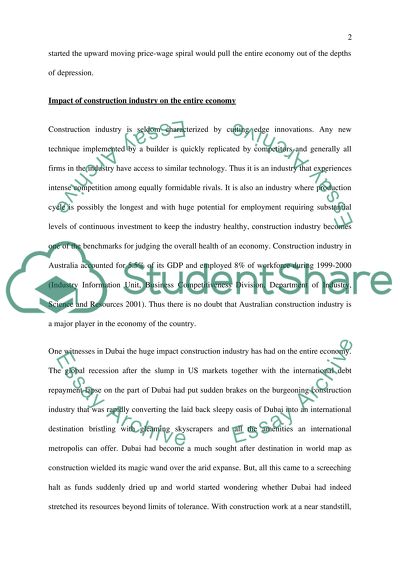Cite this document
(Economics of Construction Industry Case Study Example | Topics and Well Written Essays - 2000 words, n.d.)
Economics of Construction Industry Case Study Example | Topics and Well Written Essays - 2000 words. Retrieved from https://studentshare.org/macro-microeconomics/1572500-economic-nature-of-the-construction-industry
Economics of Construction Industry Case Study Example | Topics and Well Written Essays - 2000 words. Retrieved from https://studentshare.org/macro-microeconomics/1572500-economic-nature-of-the-construction-industry
(Economics of Construction Industry Case Study Example | Topics and Well Written Essays - 2000 Words)
Economics of Construction Industry Case Study Example | Topics and Well Written Essays - 2000 Words. https://studentshare.org/macro-microeconomics/1572500-economic-nature-of-the-construction-industry.
Economics of Construction Industry Case Study Example | Topics and Well Written Essays - 2000 Words. https://studentshare.org/macro-microeconomics/1572500-economic-nature-of-the-construction-industry.
“Economics of Construction Industry Case Study Example | Topics and Well Written Essays - 2000 Words”, n.d. https://studentshare.org/macro-microeconomics/1572500-economic-nature-of-the-construction-industry.


